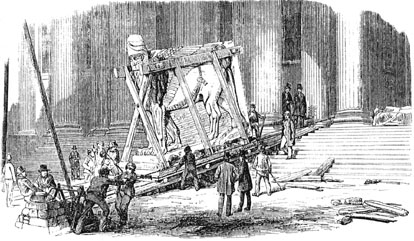

 | Page 873 |  |
on an inscription from Assyria confirmed that the code had indeed been cracked.
The Assyrians were known from the Bible and from Greek authors before their archaeological discovery, and fitted into an existing (if still unreliable) historical framework. The next major phase of discovery, on the other hand, revealed a culture for which there was no comparable background: that of the Sumerians. From 1877 to 1881 and from 1888 to 1900 a French team under Ernest de Sarzec excavated at Telloh, the site of ancient Girsu in the city-state of Lagash, bringing to light the first substantial evidence of the Sumerian culture that had flourished in the third millennium b.c. French work continued here under other directors until 1933. As well as sophisticated works of art (notably the “Stele of the Vultures” and statues of Gudea), thousands of clay tablets with Sumerian writing were discovered. These were mostly economic accounts from the temple administrations and formed the basis for reconstructing early Sumerian economy and society.

The arrival of a colossal Assyrian statue of a winged bull at the British Museum in 1852
(Illustrated London News, 28 February 1852)
These finds established Sumer as home to the earliest literary culture in Mesopotamia. Still earlier stages of this development were traced from 1912 by a German team at Uruk (Biblical Erech, modern Warka), where a sequence of two monumental temple complexes was uncovered, along with examples of linear pictographic writing, an ancestor of the Sumerian cuneiform script, on stone and clay tablets. This remains the first evidence of writing yet recovered from anywhere in the world (Late Uruk period, ca. 3400 b.c.).
The meticulous excavations at Uruk were themselves based on the exemplary standards set by other German teams under Robert Koldewey at Babylon (1899–1913) and at Borsippa and Fara (1901–1903), and under Walter Andrae at the first Assyrian capital, Ashur (1903–1914). These excavations made great advances in the recovery of mud-brick architecture, which earlier excavators had not recognized or had ignored. At Ashur, Andrae also cut a deep sounding (a trench or hole) in the Ishtar Temple, establishing the first significant stratigraphical history of a Mesopotamian site. The expedition to Babylon uncovered the spectacular remains of the city of Nebuchadnessar, another name resonant with biblical associations. Unfortunately, virtually nothing has been recovered
 |  |